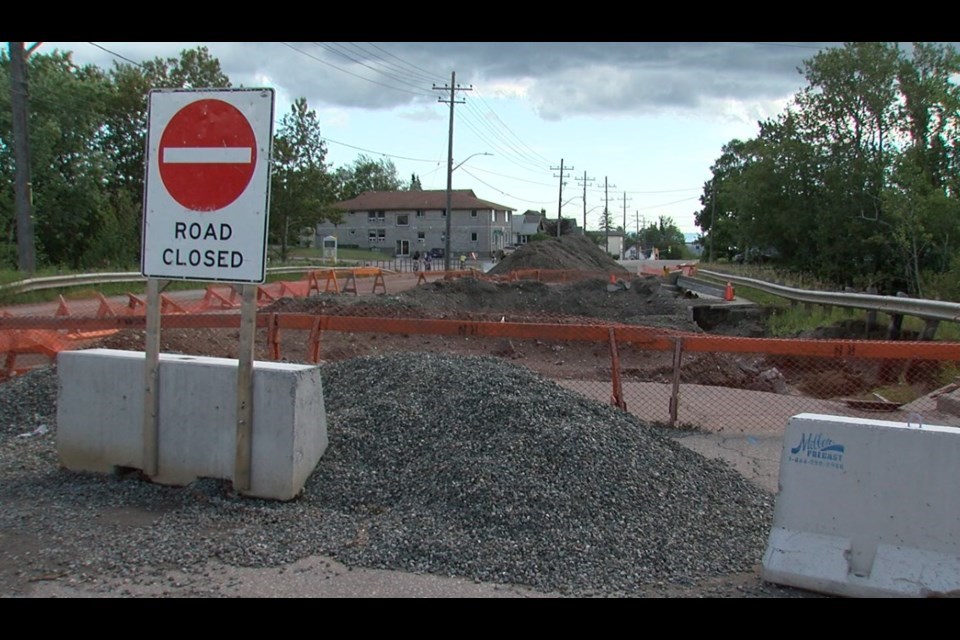THUNDER BAY — An update on the City of Thunder Bay’s climate adaptation efforts points to millions of dollars of damage from spring flooding as an example of the risks and costs of climate change to city infrastructure and the need to be better prepared.
City council received a report outlining progress on the plan on Monday from climate adaptation coordinator Jacob Porter, who called climate change a significant and growing threat to the city.
The city can expect an increase in extreme weather events like flooding and forest fires thanks to climate change, his report warns, saying that will intensify pressure on the municipality’s already-underfunded infrastructure.
The report suggests spring flooding this year is one example.
In 2022, spring flooding caused more than $3 million in infrastructure damage in the city, according to an estimate from the city’s infrastructure and operations department.
That’s largely related to the collapse of a culvert on River Street, which the city has estimated will cost $2.5 million, but also includes other roadway and culvert washouts and some sewer replacement.
The degree of flooding the city saw this spring “would be considered a one in a 100-year event based on ‘historic’ climate conditions,” Porter’s report states.
He noted in an interview the event was caused in part by record snowpacks recorded in multiple area watersheds, and follows other major flooding events in 2008, 2012, and 2016.
Other climate impacts highlighted in the report include the designation of Thunder Bay and area as a Lyme disease risk area thanks to warming winters.
Between 2021, and 2022, Thunder Bay experienced 28 days above 30 C, the report says, compared to a local historic average of 2.7 days.
Mayor Ken Boshcoff suggested Monday that increasing freeze-thaw cycles could make maintaining the city's roads more challenging.
“We are seeing warmer winters in general where we can jump back and forth between the freeze-thaw cycles, more freezing rain where we do get that frost build-up that can damage our hard surfaces,” responded Porter.
The report outlined steps the city has taken that respond to the impacts of climate change.
That included planting 800 trees in 2022, though councillors questioned if that was enough.
The city aims to increase tree canopy coverage within city limits to 30 per cent, Porter said. Since 2016, that figure has risen from 25 to 27.7 per cent.
However, the city's annual rate of planting is falling far short of the pace it would need to reach a more ambitious commitment it made in its net zero strategy to plant 100,000 trees by 2050.
The city also added two new low-impact development sites, which use plants and landscaping to naturally manage stormwater. The city now has 28 such sites covering over 27 hectares, up from 7.5 hectares in 2016.
The city initiated flood mitigation studies of the intercity area to inform future infrastructure projects and "outline large-scale flood mitigation options."
It will also launch a “climate lens tool” in 2023 to measure the climate change implications of municipal decision-making, incorporating the information into staff reports and other internal documents.
An overhaul of the city’s yard bylaw, meanwhile, will allow for “greater use of native species and increased climate-resilient habitat.”
The city is considering similar rules changes to allow naturalization on city boulevards, Porter's report notes.
The city is also participating as a pilot site in a new project by the Regional Public Works Commissioners of Ontario (RPWCO) to assess the climate vulnerabilities of local infrastructure, serving as a case study for the organization’s Climate Resilience Roadmap for Ontario Municipal Infrastructure and Systems project.
The report also reviewed 20 indicators the city tracks to measure its climate adaptation progress.
Since 2016, when the city began tracking the information, the city increased the percentage of its annual expenditures related to climate adaptation from under $600,000, or less than half a percentage point, to $6.6 million, or around 2.4 per cent. Most of that is related to stormwater management.
The percentage of corporate reports that include climate adaptation measures rose from four per cent in 2016 to nine per cent in 2021.
The percentage of the city that is impervious, such as paved areas, fell from 17.8 per cent to 14.7 per cent since 2016.
Reducing the impervious area is considered to reduce climate risks like flooding and heat islands.
